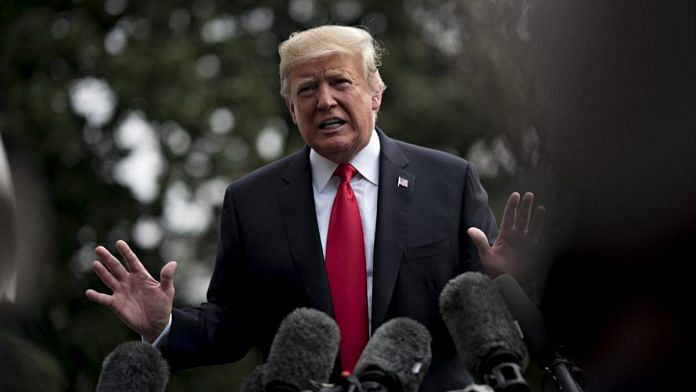Whatever one thinks of Donald Trump’s trade negotiating strategy — which has largely relied on tariffs that have hurt U.S. companies and consumers most of all, many of them from parts of the country that are both economically fragile and that supported Trump in the last election — he’s right about one thing. A global trading system meant to benefit everyone has wound up disproportionately benefiting the People’s Republic of China.
Trump is hardly alone in believing this. The problem is that he behaves as if he is.
Across the world, similar resentments have built up against Beijing’s trade practices. Country after country is convinced that persistent trade deficits with China are larger than is strictly natural — that the mainland’s complex system of subsidies and support for state-owned companies gives them a competitive edge that local producers can’t match.
Yet, if every economy tried to address the problem unilaterally, as Trump has done, then not only would consumers across the world suffer. The entire global trading system would be put under unprecedented pressure.
Shared problems need global solutions. The trading system has to be reworked to address the Chinese challenge, not abandoned. Ideally, the U.S. would be taking the lead in coordinating this global effort instead of fighting a misdirected and unilateral trade war.
It is true that the beginnings of a joint effort to reform global trade are visible. In September last year, as the United Nations General Assembly was meeting, so were trade officials from the U.S., Japan and the European Union. In a statement afterwards that never once mentioned China, they laid out their complaints: that “some countries” followed “non-market-oriented” policies; that state-owned, subsidized “national champions” distorted global markets; and that the classification of developing countries was “overly broad.”
Also read: The world shouldn’t help save China’s Belt & Road
In January, the three nations met again and restated their concerns, adding that they would have something to present to other WTO members on industrial subsidies soon. They also once again had a few sharp things to say about “advanced developing countries.”
What the three big developed-world trading powers don’t seem to understand is that pretty much all developing countries other than China are concerned about these problems, too. By not clearly stating the purpose and direction of the reforms they seek, those powers are raising fears among those emerging economies that they’ll be caught in a net meant to snare China.
For example, a group of developing countries are meeting in New Delhi in a few days to work out how to protect the “special and differential treatment” for poorer nations that’s baked into all WTO deals, meant to allow them the space to adjust to open competition. They fear the U.S. wants to eliminate such provisions in future trade agreements dealing with areas such as fisheries and e-commerce.
This would be both unfair and, more importantly, a mistake. If China is the problem, as most would agree, then any solution needs to be tightly targeted. Failing to do so increases the chances of Beijing building alliances across the developing world to block any effort to make it change its ways. There should indeed be an objective way to determine if a country has “graduated” away from developing status — as China certainly has — but it is one that developing countries should agree on as well.
Bringing other developing nations onboard will make any reforms more acceptable politically. They’ll then be the product of broad-based agreement across a large swathe of WTO members, rather than unilateral U.S. action. That will reduce the chances they’ll be seen as an attempt by the developed world to water down hard-won privileges assigned to poorer countries.
The simple truth about Trump’s trade war is that it is the wrong war being fought in the wrong way — even if against the right target. The U.S. should instead reach each out to both developed and developing countries; form a coalition of the willing; and then make it clear that China must open its markets properly, stop hidden subsidies to its exporters and national champions, and generally abide by the implicit contract that brought it into the WTO. The best way to convince China to change is to show the People’s Republic just how isolated it really is.
Also read: Trump says US, Russia and China discussing a potential three-way nuclear deal
Mihir Sharma is a Bloomberg Opinion columnist. He was a columnist for the Indian Express and the Business Standard, and he is the author of “Restart: The Last Chance for the Indian Economy.”






